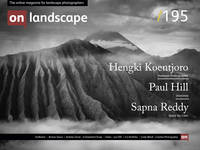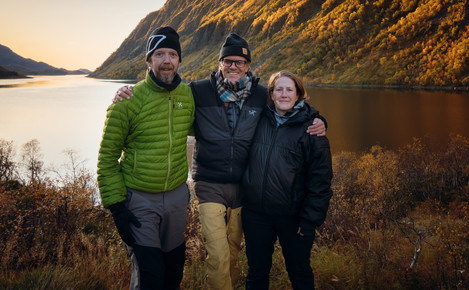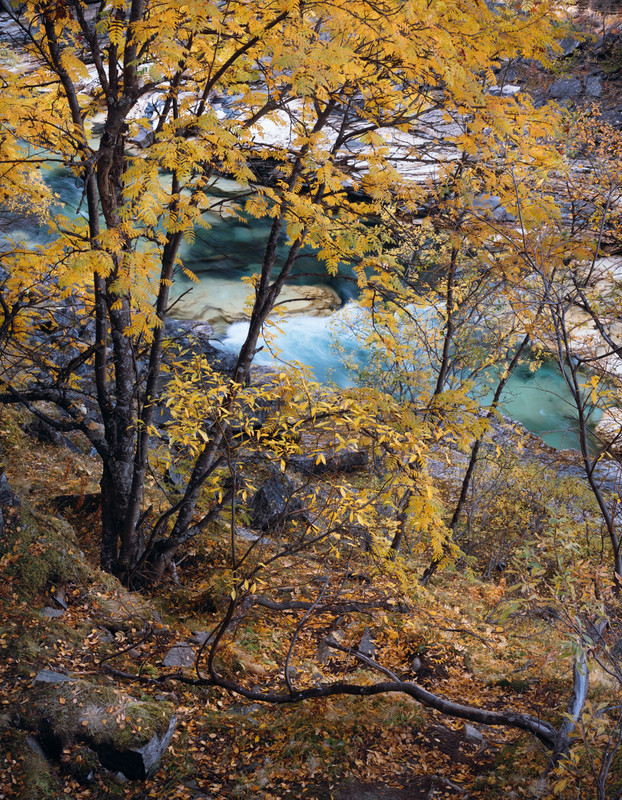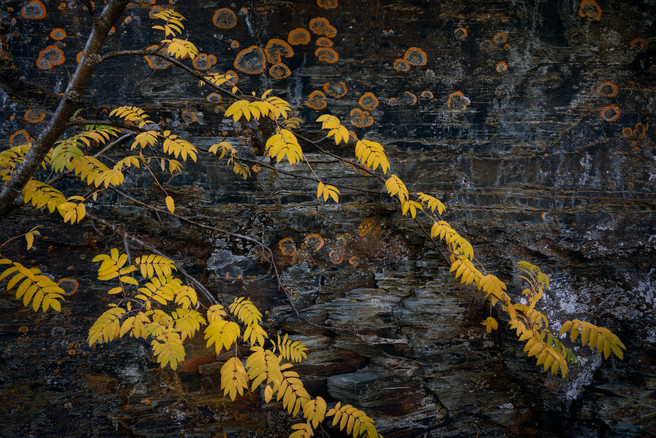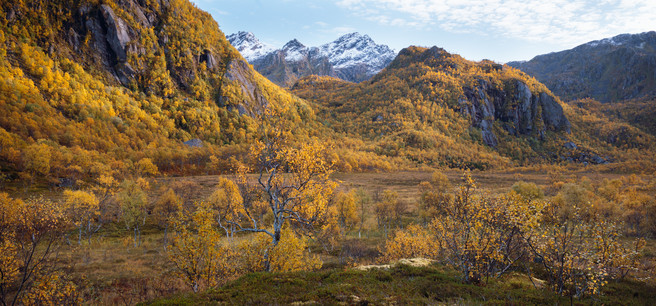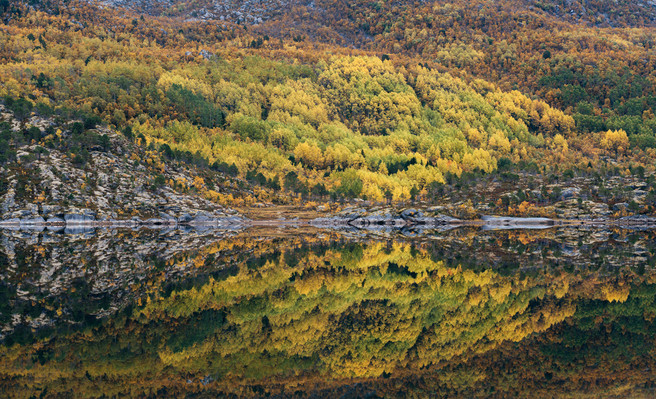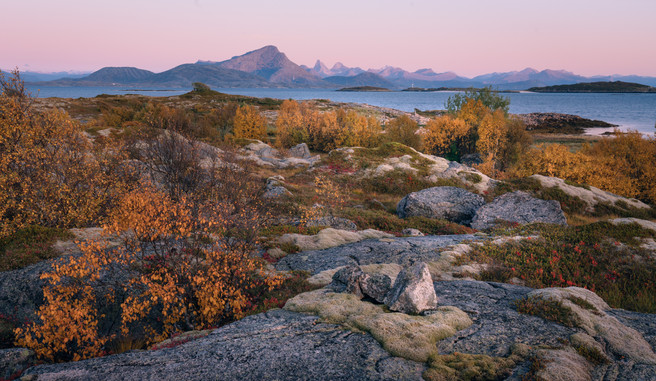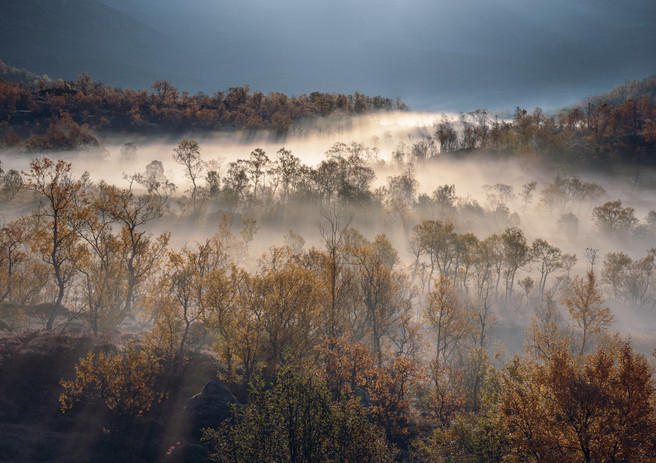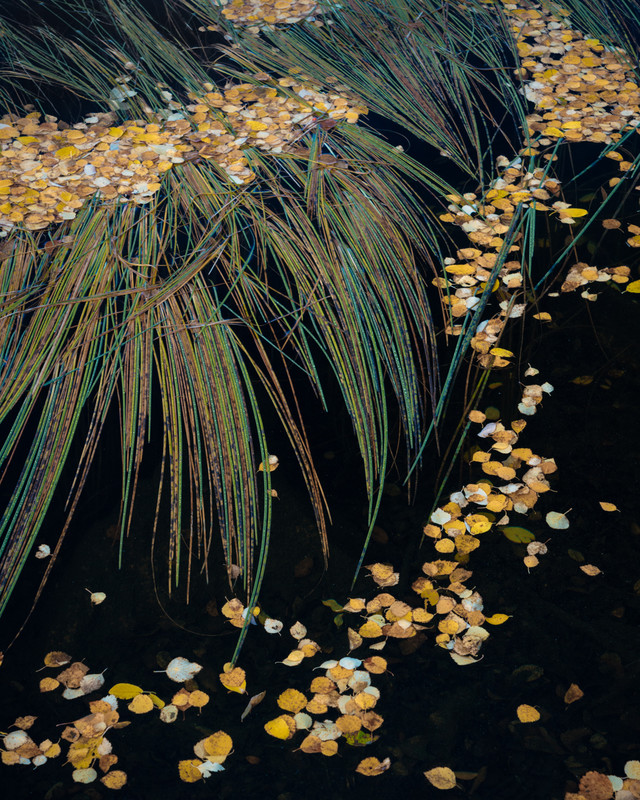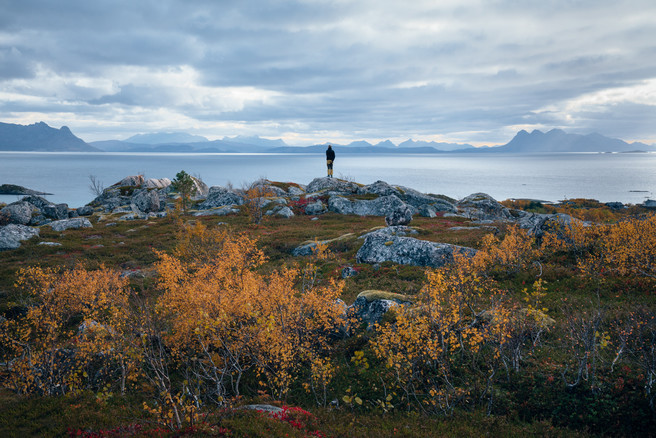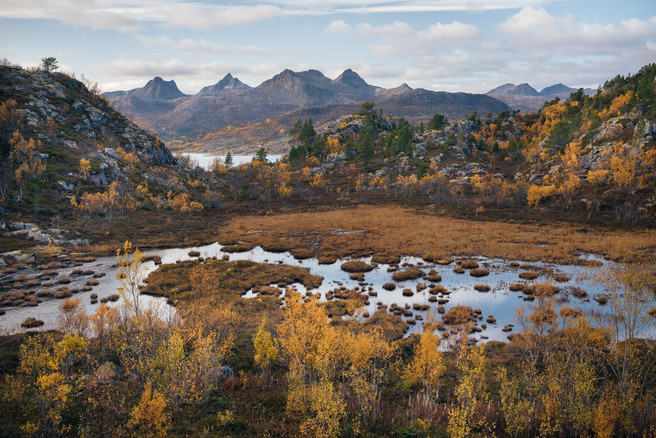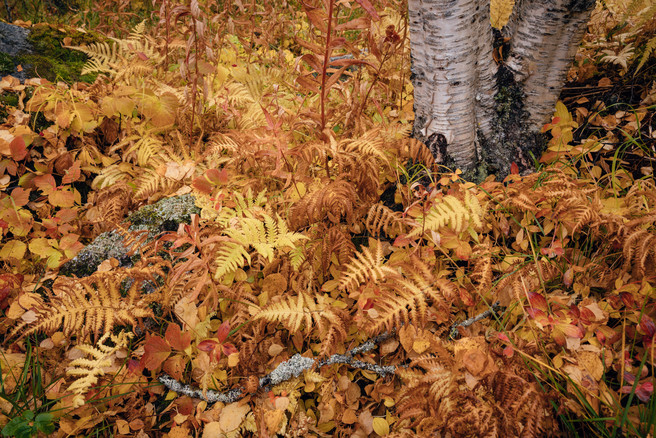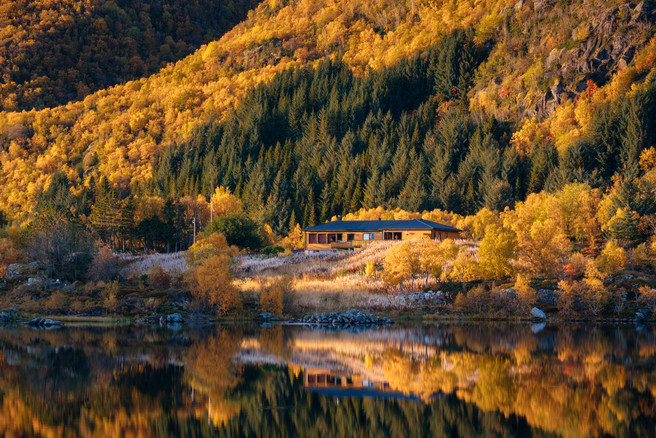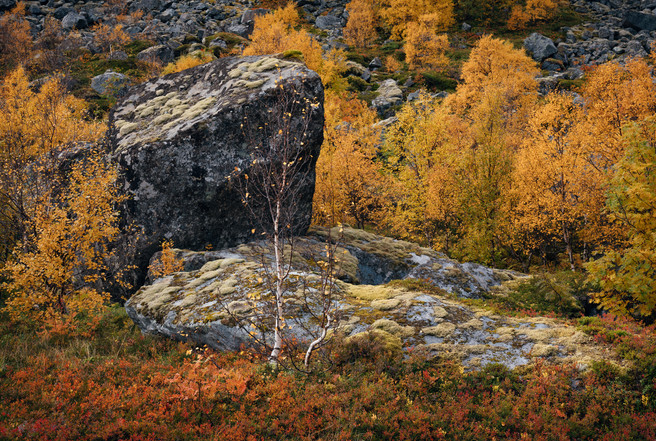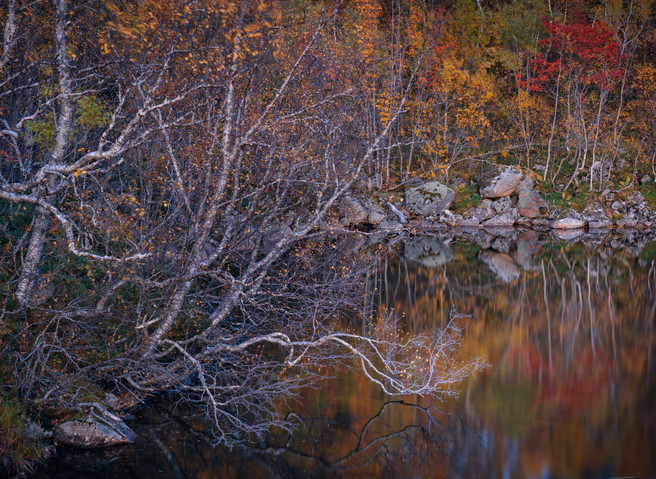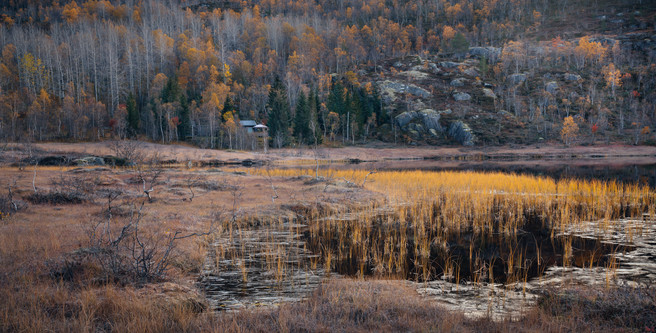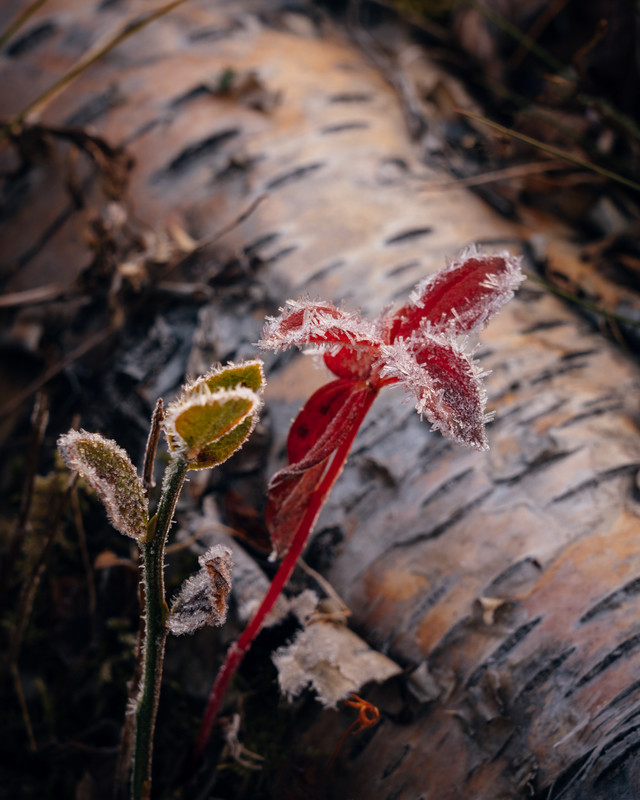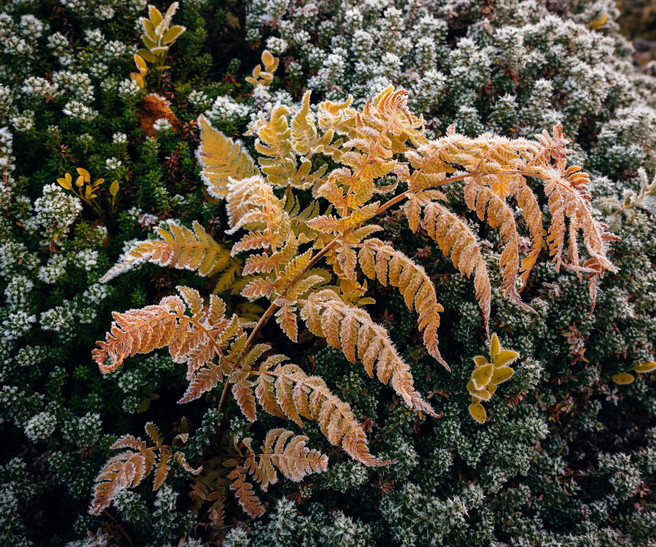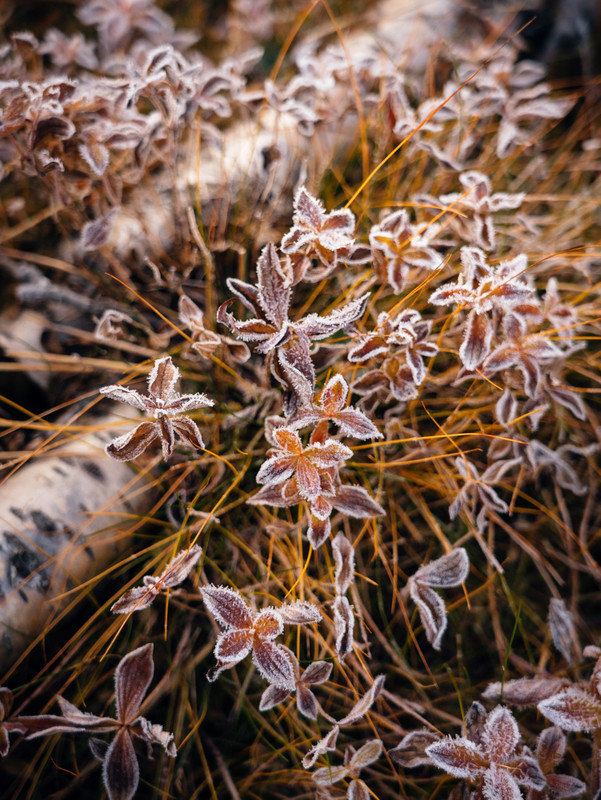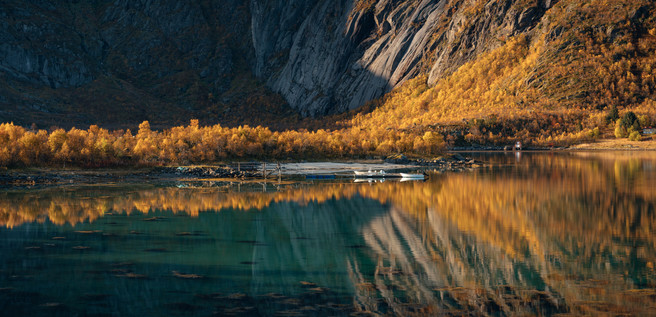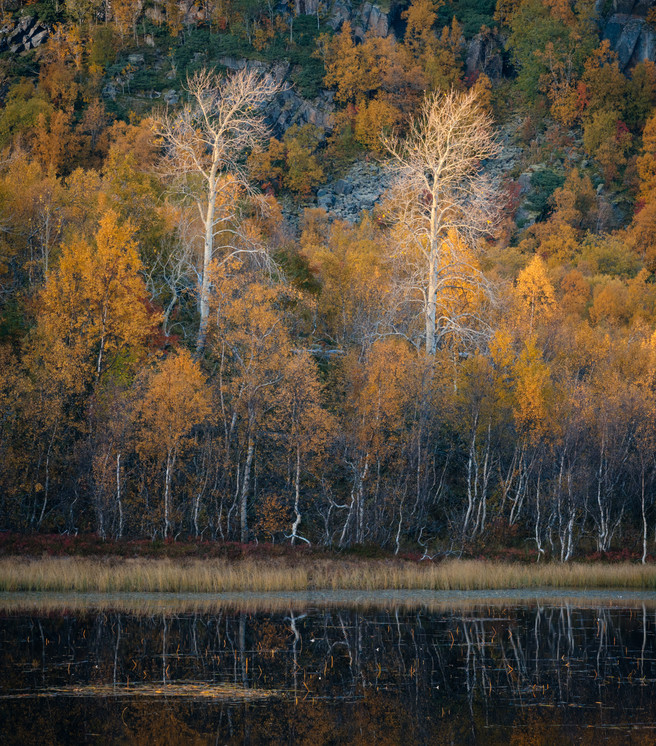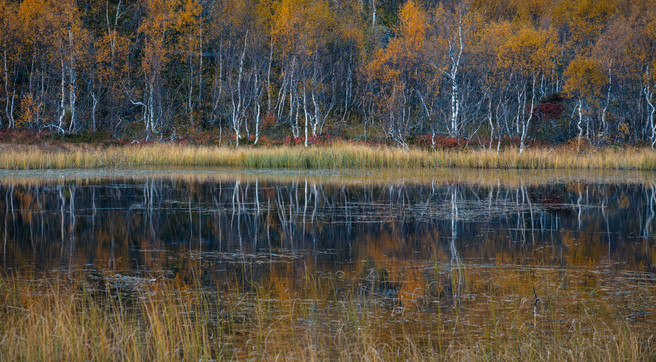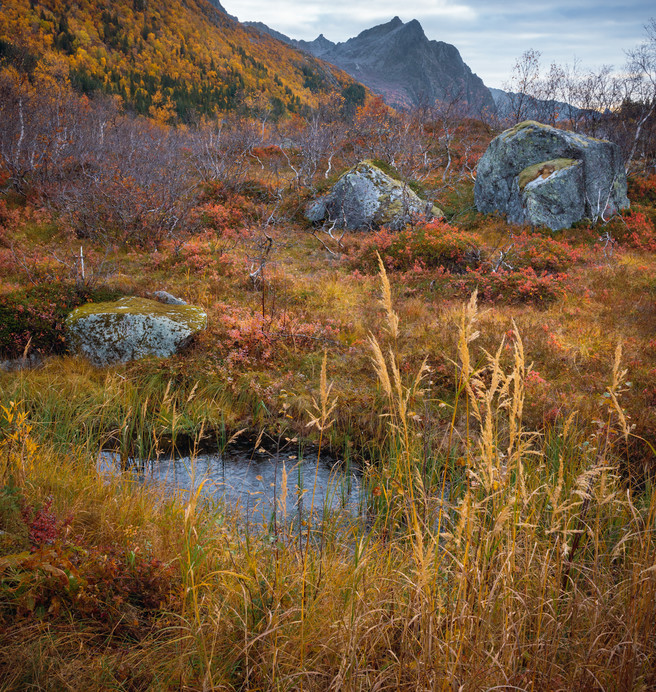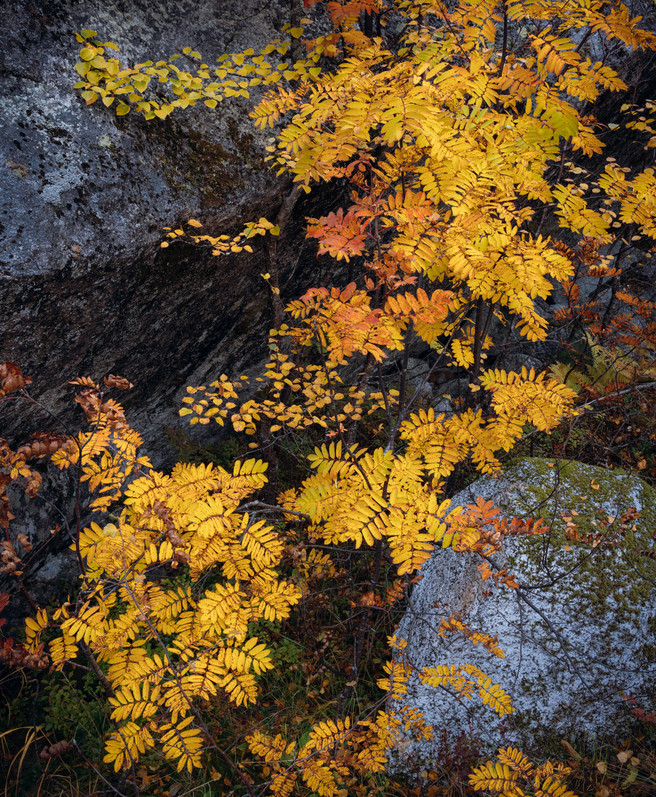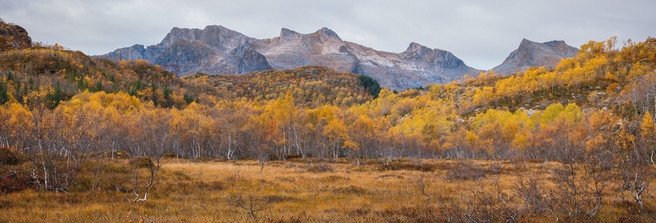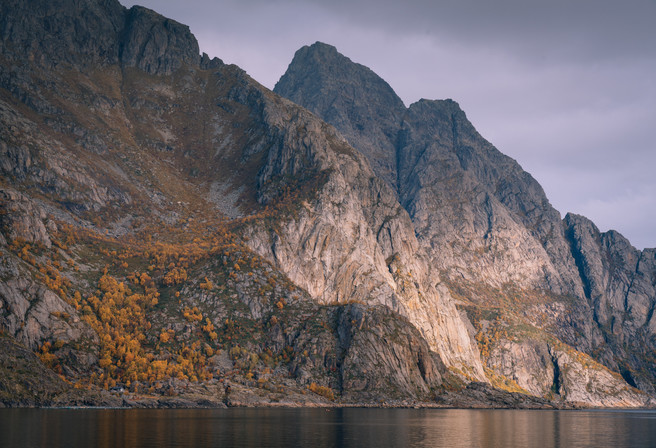An Alternative take on Lofoten

Tim Parkin
Tim Parkin is a British landscape photographer, writer, and editor best known as the co-founder of On Landscape magazine, where he explores the art and practice of photographing the natural world. His work is thoughtful and carefully crafted, often focusing on subtle details and quiet moments in the landscape rather than dramatic vistas. Alongside his photography and writing, he co-founded the Natural Landscape Photography Awards, serves as a judge for other international competitions. Through all these projects, Parkin has become a respected and influential voice in contemporary landscape photography.
During our last Meeting of Minds conference, one of our regular visitors, Trym Ivar Bergsmo, said to us “Would you like to come and stay with us in Norway sometime and allow me to show you around?” As both Charlotte and I are more of the cold climes holidaymakers rather than the beach and cocktails sort, this caught our interest immediately but in the frantic conference conditions, it slipped our minds. We checked that Trym was still amenable and arranged a date to try to coincide with probable Autumnal conditions, around the end of September to the start of October.
For Trym’s sake I don’t want to reveal the actual location we stayed but I can summarise by saying it’s somewhere on the south side of the Lofoten Archipelago, midway between Narvik and the tip. Most of our explorations covered Lodingen, Hadsel, Vågan & Vestvågøy. I will also apologise for the number of photographs in this article but for me, each image revealed something about the area different to my preconceptions of mountains, rocky beaches and fjords. Finally, Trym was the perfect host and I have to give a big thank you to him and his family for allowing us to share his house and his love of his country.
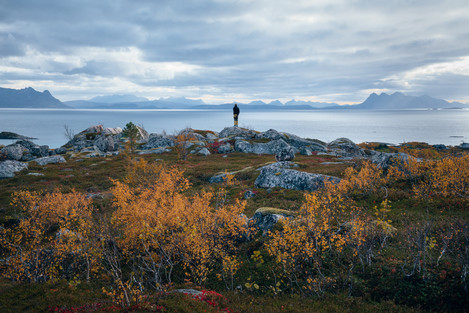
In a quiet moment, Trym strikes a "Ruckenfigur" over his native land, recalling Caspar David Friedrich.
Arriving in Narvik and getting past the shock of driving on the wrong (right) side of the road, our first major hurdle was moose dodging, when an adult and juvenile ran across the road right in front of us. Trym said that this surprise was the hardest to organise for us! Are Norwegians always so accommodating?
Anyway - the rest of the journey that evening passed without mammalian obstacles and we arrived in the dark on a small peninsula to a beautiful home and a welcome meal where we slowly unpacked.
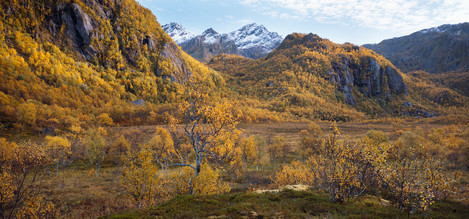
An example of the scenes we were passing on many occasions but were unable to stop the car at. Fortunately, before each road tunnel there are places to stop your car for a short while and we made the most of this to capture a wider view. Those familiar with British birch trees will notice the difference in colour here. It's not a photographic error, the Arctic birch trees had a more orange yellow than the typical British more lemon yellow.
I was unsure what photography equipment to take to Norway as I knew we were going to be climbing and walking (well - I thought we were going to be doing lots of climbing, more later) and hence most of our weight allowance was taken up by trad climbing gear (lots of cams!). In the end, I settled for a simple Sony A7R3 and 24-105 thinking that it would handle most situations.
Our first day started early with a trip over the border to Abisko in Arctic Sweden where we bumped into Oliver Wright (who works in the area) and a random encounter with Alister Benn (who was scouting with his partner). The drive over the border would have taken about two days had I stopped everywhere that looked interesting, but we had a goal and once we got there I knew why. The Abisko canyon is beautiful and the forests that surround it were nearly at their peak of Autumn colour, a swathe of orangey-yellow with mixed colour still in some of the trees.
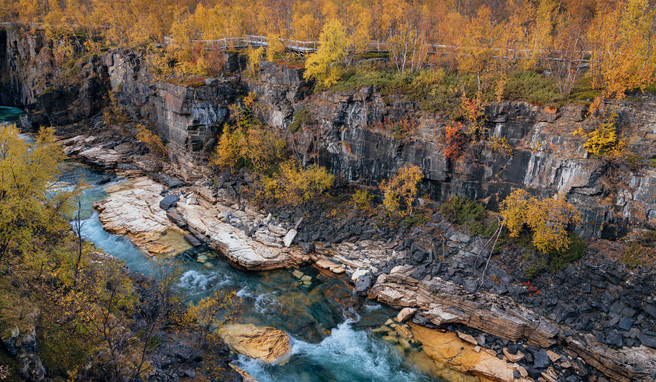
Not intended to be a finished photograph but just a record of the view of the lower Abisko river. The combination of Autumnal colour, water and rock made me want to spend more and more time here.
I found a way down to the edge of the river to make the most of the lichens and protected autumnal colour and spent the remaining part of the day exploring the forest and canyon. I could spend weeks in just this location and hope to return.
The following four days were spent exploring the area and getting past that usual visual hurdle of seeing too much to photograph but not enough to deeply interest. It seems to take me a while to start to see things that really engage. I talked a little bit about this in my presentation at David Ward’s talks which will be included in the magazine in the next issue.
Although Trym was only supposed to be around for a few days of our trip, after a couple of days Trym asked if he would mind his company for a bit longer as the Autumnal conditions were some of the best he’d seen for many years and the prospect of settled weather for over a week couldn’t be resisted. How could we refuse a knowledgeable and entertaining guide! (and not only did he arrange the moose and sea eagles, he also managed to organise Charlotte’s first aurora viewing on the balcony of his house!)

Another 'tourist' shot to capture a memory of a moment. This was the very last glimpse of light as we returned from a day climbing near Henningsvaer. The colours visible on the banks of the mountains opposite were what stopped the car but the wonderful reflections and pair of swans in the lake to the right were the icing on the photographic cake.
What became quickly apparent was just the extraordinary amount of forestry and scrub of all types. Although most of the trees were birch, there were also many aspen, rowan and willow. In some ways, the views seemed similar to Scotland - but a Scotland without deforestation where the trees wandered all the way to the natural treeline and the small amount of commercial forestry was drift planted and in most cases not visually unsettling.
At the end of the first week, I felt like I had my ‘eye in’ and was starting to see compositions and ideas that ‘worked’ for me. We also had the first cold spell with early morning mist and frosty conditions. The arrangement of the fjords meant that quite often a gentle onshore wind would carry wet warm air into the mountain valleys where it formed layers of mist and created an accumulating hoar frost in little cold pockets.
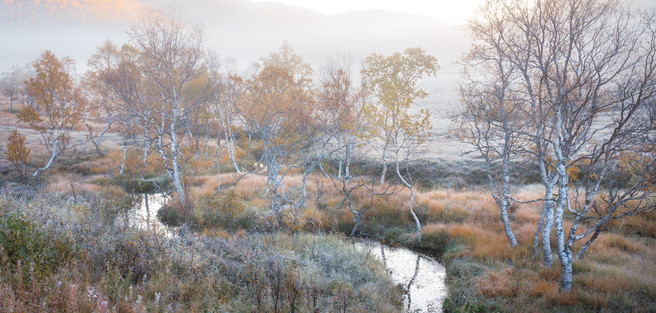
On our drive out to go climbing, we saw some amazing hanging mists as the moist, coastal area drifted into the cold valleys from the overnight clear skies. We returned the following day with Trym to find the same conditions. I spent some time working out whether to keep the skyline and glow of direct sunlight in this picture but I think it gives a little context and interest. The two key parts of the picture are the cold, clean trunks of the birch against the warm, frosted grasses and the snaking brook winding its way through the picture.
The following couple of days were spent exploring near Trym’s house and reminded me of why I need to spend more time randomly wandering in a sort of photographic Brownian motion. Not only that, the fun in rock hopping, exploring and chilling out is as important as the photography itself for me.
We did spend a couple of days rock climbing though, our first proper outdoor trad climbing. I quickly found a problem with climbing in Norway though, beyond the cheese-grated ankles implicit in gabbro crack climbing, and that is the distraction of the landscape when you’re supposed to be belaying your wife!
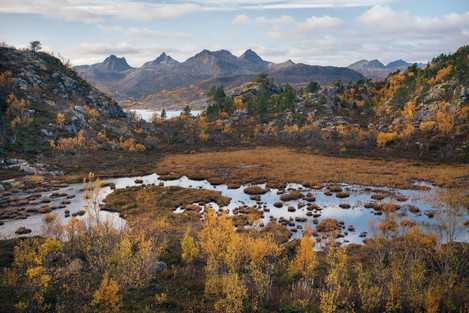
Whilst walking near Trym's house we discovered a very wet and boggy hollow. On traversing above the reflections of the wonderful blue and fluffy skies complemented the far mountain range.
Back to the photography though and we spent a two-day trip driving down to the tip of Lofoten, which had drama in spades but didn’t work for me. The best part of this trip was discovering the areas around Henningsvaer and Valberg. A wonderful stretch of coastline with amazing autumnal colour.
After a final frosty morning which produced the best hoar frosts of the trip, we spent our last day following the cruise liners down to Trollfjord.
After seeing so many images from Lofoten, and refusing to research the trip ahead of time, I was most pleasantly surprised to find that the area had so much more to offer than just the mountains, fjords, aurora and beaches that I had seen previously. The combination of arctic flora and mountain habitat gives something familiar to those who may have visited the Scottish mountains but with a consistency of colour, texture and dynamics that provide abundant material for the landscape photographer. We were obviously lucky with the weather and autumnal conditions but I could see that the potential was there even if these didn't play their part in the same way that we encountered them.
Again, I apologise for the abundance of photographs. I hope they portray a different side to the area than you may have seen previously.
- If you can access them, the banks of the Abisko canyon have so much to offer. This Rowan and fallen Willow tree are exquisite but the mixture of glacial blue water and white limestone banks gives this scene a wonderful colour balance. As a side note, I started to use polarisers for the first time on this trip because of their ease of use with the H&Y filter system.
- Behind my previous image, the rowan tree dangled it’s limbs next to the canyon wall on which I found these extraordinarily bright lichens. In order to get this view I had to stand on a rock and hold the camera at full arms length above my head. With the combination of the tilting rear screen and multiple attempts, I finally got the composition I wanted.
- Not intended to be a finished photograph but just a record of the view of the lower Abisko river. The combination of Autumnal colour, water and rock made me want to spend more and more time here.
- An example of the scenes we were passing on many occasions but were unable to stop the car at. Fortunately, before each road tunnel there are places to stop your car for a short while and we made the most of this to capture a wider view. Those familiar with British birch trees will notice the difference in colour here. It’s not a photographic error, the Arctic birch trees had a more orange yellow than the typical British more lemon yellow.
- I can’t recount some of our experiences of Norway without mentioning the aspen. Having never encountered these before they were quite the revelation with their spindle trunks, beer mat leaves and waterfall rattling in the wind. Here they formed an odd ‘eye’ shape. I can only presume this is related to the fact that a stand of aspen is typically a single organism and grow from root suckers (I’m guessing they started from the older stand in the middle of the eye)
- One of our goals was to climb the very pointed peak in the centre of the skyline here, Stetind. Sadly the snow arrived early. However, I was determined to find a place to photograph it, at least from afar, and this mossy moorland near Trym’s home provided enough foreground interest to arrange into the twilight glow.f
- Another ‘tourist’ shot to capture a memory of a moment. This was the very last glimpse of light as we returned from a day climbing near Henningsvaer. The colours visible on the banks of the mountains opposite were what stopped the car but the wonderful reflections and pair of swans in the lake to the right were the icing on the photographic cake.
- On our drive out to go climbing, we saw some amazing hanging mists as the moist, coastal area drifted into the cold valleys from the overnight clear skies. We returned the following day with Trym to find the same conditions. I spent some time working out whether to keep the skyline and glow of direct sunlight in this picture but I think it gives a little context and interest. The two key parts of the picture are the cold, clean trunks of the birch against the warm, frosted grasses and the snaking brook winding its way through the picture.
- As the sun rose above the mountains, it case shadows against the rising mist. The backdrop, still in shadow and illuminated only by the blue sky above gave a beautiful colour contrast.
- To be blessed with still weather in autumn next to water gives so many possibilities. Here the reeds had captured many birch leaves in sweeping patterns. My only job was to arrange the frame edges.
- In a quiet moment, Trym strikes a “Ruckenfigur” over his native land, recalling Caspar David Friedrich.
- Whilst walking near Trym’s house we discovered a very wet and boggy hollow. On traversing above the reflections of the wonderful blue and fluffy skies complemented the far mountain range.
- Whilst I was sitting with Charlotte as she took a photos of some reeds, I turned around and noticed just how intense the leaf litter and ferns were. The leaves almost had a transparency which gave them an essence of internal lightl. Here, the dwarf dogwoods (small yellow/red leaved plants gave the red end of the spectrum.
- If Carlsberg made summer homes. To be fair, nearly every remote house seemed settled into a tiny nirvana. Here the last rays and calm conditions reflected the drifts of fireweed and stands of birch.
- Attracted by the rowan saplings glowing orange at the foot of this birch I looked for arrangements that worked against a backdrop of moss covered boulders. The main choice was whether to place the top half of the birch against the dark rock or not. I think the contrast worked well.
- Almost home after a twighlight session and I made another emergency stop caused by that insane splash of red in the top right. Fortunately the wind was rising and falling and gave me enough time for a 4 second exposure without too much water movement. The curled reach of white branch skimming the water’s surface echoed by the shapes of the rest of the branches finished the composition off.
- Seeing the temperature drop dramatically, we set off early to look for frosty conditions and were well rewarded as the next few photographs will show. This was a view of a secluded summer house with, remarkably, no access road or parking! That at least kept things wild…
- Below the road in a small pocket that would receive no daylight, was a collection of discarded birch trees (possibly from road clearing). These had started to collect lichens and the bark was starting to peel. They provided great background for the colourful blueberry and dogwood growing around them.
- A fern curls its way out of a stand of frosted juniper. Despite having a tripod with me, I chose to make most of these photographs hand held so as to give myself more opportunity to play with camera positioning. I compared a few hand held to tripod mounted photographs and was happy that there was little difference.
- The dwarf dogwood, also known as bunchberry, is a exceptionally beautiful plant in summer with its white flowers and lipstick red fruits, but the autumnal colour and texture impressed us the most. The four leaf tipped shoots typically showed a developing orange and red colour but in thie frosty hollow that turned into a warm browns and oranges. With firegrass and birch bark as a background I spent some time working on a complementary composition.
- As we followed cruise liners down Trollfjord, we encountered a patch of incredibly blue water. Complemented with the sunlit orange-yellow of the birch and the faint blue of the cool shadows, this was a rare scene that looked over saturated in real life.
- Sometimes light does the strangest things. In this scene, the two bare aspen are lit by a shaft of sunlight from between two mountains behind me that has bounced off the water, caught the trees and then disappeared off to the right of the image. The scene lasted about two minutes, enough to nearly run myself off a cliff in my bid to find a suitable vantage point.
- Once the light had disappeared from the previous trees, I made the most of the still conditions to find some reflections through the grasses int he foreground. This is about a 50% crop and one of the few times I wished for a longer lens than 105mm
- As we had some time to fill, Trym took us to a small road near where his parents lived and we took a walk past a reservoir. “This won’t be very photographic so we don’t need to bring cameras”. I took one just in case.
- In the opposite direction to the previous photograph, two boulders nestled against each other and a rowan and birch tried to find the light in between.
- On a tiny side road off the main dual carriageway in Svolvaer we tried to find access to a stand of aspen. What we found was so much better. Only 200 yards from the main road through a major town.
- Visiting a friend of Trym’s on the island of Henningsvaer we returned to the car to find a wonderful raking low light on the side of the mountains.

